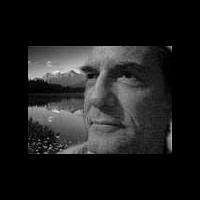Mensagens: 5
Idioma: English
cirko (Mostrar o perfil) 25 de novembro de 2007 20:22:04
I hope that makes sense... let me know.
Thanks in advance!
mnlg (Mostrar o perfil) 25 de novembro de 2007 20:37:41
"tio" means "that thing", "that concept", "that matter":
Who said that?
Kiu diris tion?
"ke" introduces an objective sub-sentence, as in
Everybody knows that Esperanto is a language
Ĉiuj scias, ke Esperanto estas lingvo.
In this sentence, "everybody" is the subject, "knows" is the verb and "that Esperanto is a language" is the object, but it is also a sentence.
I hope I replied to your question. If you still have doubts feel free to ask.
cirko (Mostrar o perfil) 25 de novembro de 2007 21:19:36
thank you!
eb.eric (Mostrar o perfil) 30 de novembro de 2007 03:33:20
You no doubt remember that TIO=that (thing), and TIU=that (person, or mentioned thing).Peace,
Tio estas libro= That is a book. Tiu libro estas mia (libro). = That book is mine.
No problem there - but English also uses the word THAT for another purpose, as a conjunction, a word which joins two phrases or clauses in a sentence. They both contain a verb, and the one introduced by that gives some information relating to the main clause. Esperanto uses the word KE for this.
Mi rimarkis, ke vi rigardis la libron = I noticed that you looked at the book.
During the last couple of years, I have heard several good, experienced, North American speakers using ke intead of kiun. The word "that" has been used, or misused, for so long as a substitute for "who/whom" and "which" in English, that it is now accepted as correct. It is not correct in Esperanto.
"The book that I gave (to) you" translates into Esperanto as "La libro kiun mi donis al vi". The English phrase could be better expressed as "The book which I gave to you". It is absolutely incorrect to use the word ke when expressing this in Esperanto.
More examples of sentences in which it is NOT correct to use ke:
The book that I read / The book which I read = La libro kiun mi legis
The man that you saw / The man who(m) you saw = La viro kiun vi vidis
I remember the time that / I remember the time when = Mi memoras la tempon kiam . . ( or better: la okazon kiam . .)
Never, absolutely NEVER, say "la tempo ke . . " or "la libro ke . . "
RULE:If a correlative word, such as WHO(M), WHICH, WHEN, in place of THAT, still gives the correct meaning, then it is not a conjunction, and is not translated by KE.
KE always translates into "that" in English, but the reverse is not true. As you know, when translating from any language into Esperanto, you must be careful to translate the correct meaning of a word which has more than one meaning.
Let us be careful not to start creating an English-speakers dialect of Esperanto!
Ken Price
Eric/Eriko
billpatt1942 (Mostrar o perfil) 1 de dezembro de 2007 01:32:43
Eric's example: Mi rimarkis, ke vi rigardis la libron = I noticed that you looked at the book. This sentence can't be said "I noticed that which you looked at the book." So use Ke. Say "I noticed that which you looked at was the book." Mi rimarkis tion, kion vi rigardis estis la libro. As mlng said, when the second part is a sentence ...
In the example: The book that I read / The book which I read = La libro kiun mi legis, a full old-fashioned way of saying it is "That book, which I read ..." or Tiu libro, kiun mi legis..." Actually, although leaving out the first "Tiu" is an acceptable shortcut or abbreviation in Esperanto, it is always implied to be there. If, in English and Esperanto, we practice using the fully expanded form for a while, it becomes clearer when to use tio..kio(n) or kiam ...tiam, etc., at least in my experience.



